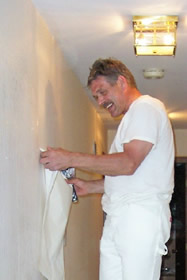
Figure 1 - Removing wallpaper with a scraper
What you are planning on doing with the wall, after the wallpaper is removed is your first and primary consideration.
If you are planning on replacing the old wallpaper with new wallpaper, in most cases, you should strip off the old wallpaper. Depending on the type of wallpaper that is currently on the walls, its removal may be mandatory.
Some wallpapers can have new wallpaper applied over them. If your current wallpaper meets these criteria, you do not have to remove the existing wallpaper.
- There is only one layer of wallpaper currently on the wall.
- The current wallpaper is smooth, without any texture.
- The current wallpaper has no bubbles or wrinkles in it.
- The current wallpaper is adhered to the under wall.
- The wall is completely covered with no missing pieces.
If the current wallpaper meets the aforementioned criteria, with a little work to prepare the surface, cleaning the walls and applying a primer for the new wallpaper you do not have to remove the old wallpaper.
If you have any of the following situations you must remove the wallpaper before proceeding:
- There are multiple layers of wallpaper.
- The current wallpaper is made of vinyl and / or has a foil or plasticized surface.
- The new wallpaper that you are planning on using is vinyl.
- The current wallpaper is made of cork, grass or burlap.
- You are planning on painting the wall, rather than covering it with new wallpaper. The exception is "paintable" wallpapers. You can apply a new coat of paint to wallpapers that are designed to be painted.
Work Area Preparation:
- Remove items from the walls, including any sconce lighting, pictures, mirrors and shelving.
- Remove all electrical box cover plates, including receptacle, switch, TV and telephone outlet plates.
- Allow a minimum of 3 feet of working area around the perimeter of the room, by moving furniture to the center of the room and covering it with plastic drop cloths.
- Place rags or towels along the baseboards to protect the floor area.
Dry Strippable Wallpaper:
Many of the newer wallpaper products are "dry strippable". What this means is that the paper can be removed without the use of adhesive solvents or steam.
If you have dry strippable wallpaper currently on your wall, you can remove it by lifting the bottom or top corners using a scraper, holding both corners in your hands and slowly pulling up or down on the wallpaper. Dry strippable wallpaper will come off the wall in strips in the same manner as it was hung.
Warning!
If while you are removing the wallpaper and you notice that the facing material on the drywall is also being removed - STOP immediately.
This is an indication that the surface of the drywall was not sealed properly, prior to the installation of the old wallpaper. You must repair the surface of the drywall by applying an adhesive to any of the loose pieces of drywall paper. Any holes or indents in the drywall must be filled with a spackling compound or drywall joint compound (mudd), and then sanded. After the compound has dried you must paint the surface with an oil based sealer or undercoat - do not use a water based product.
Wallpaper That Can Be Peeled:
Some vinyl wallpapers are designed to allow the vinyl surface layer to be peeled away from the paper backing. Once you have removed the vinyl surface layer you must remove the paper backing. Do not attempt to wallpaper or paint over the backing.
Wallpaper That Can Be Washed:
Wallpaper that has an easy clean surface is more difficult to remove than other wallpapers. The easy clean surface prevents strippers from penetrating the top layer and dissolving or softening the glue which is what is necessary in order for them to work. There are special tools made to help you score this type of wallpaper, they have hardened steel wheels on the end which make many perforations in the surface layer and allows the solvent to penetrate in. After using the tool, allow the solvent to sit about 15 minutes and then use a scraper to remove the wallpaper.
Steamers:
Wallpaper steamers lay a bed of steam over an area approximately 8 x 12 inches. Steamers work well, but you must be cautious as they drip very hot water and are hot to handle. If you leave them in one position to long the steam can damage drywall and plaster.
